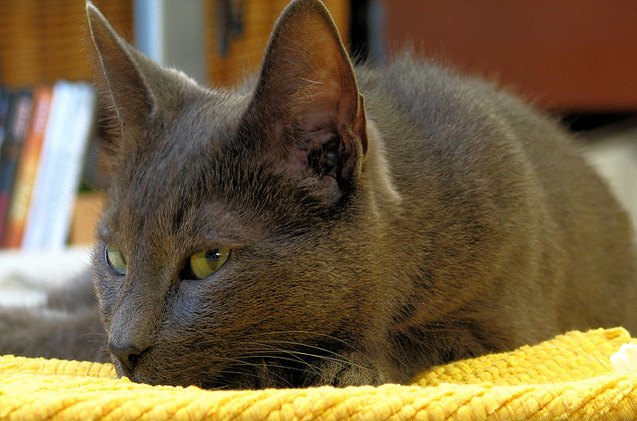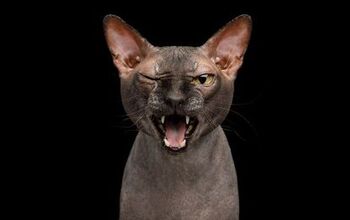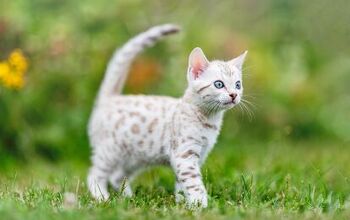Korat


About Korat
The Korat cat originated in Ampur Pimai in the Korat region of Thailand, and is the national cat of Thailand today. The first reference to the breed is in the Smud Khoi of Cats, a book of poetry, which names seventeen “good luck” cats including the Korat. The breed is mentioned in other manuscripts from the period 1350 to 1767, and modern Korats look very much like their ancient ancestors. Owning a Korat is still considered to be good fortune in Thailand today, and the cats are often presented as gifts to newlyweds. The breed came to the United States in 1959, and the Cat Fanciers’ Association recognized the Korat in 1967. Today the breed is recognized by all the U.S. registries, although Korats are still relatively rare and confined to a dedicated breeder and fancier community.
An affectionate and cuddly cat, the Korat bonds strongly with its humans, but will single out a favorite.
An affectionate and cuddly cat, the Korat bonds strongly with its humans, but will single out a favorite. They are playful, but surprisingly gentle with children. That being said, they are not well suited for noisy, boisterous households because loud noises will startle them into disappearing from sight until they’re sure the “coast is clear.” Possessed of keen senses of sight, hearing, and scent, it’s almost impossible to hide a treat from a Korat, or for any errant insect to escape detection. Intelligent, talkative, and interactive, these cats do not like to be alone for long periods of time, but they are willing to seek companionship from other animals, even dogs. Many will happily play fetch, and they enjoy their lap time, lavishing expressive affection on their humans and exhibiting great trust in their owners. Although not aggressive, they can be given to horseplay, so it’s good to keep your Korat’s nails trimmed.
The Korat’s head is heart-shaped, with additional hearts appearing around the nose and in the face. They have a semi-cobby body, which tapers at the waist. They are surprisingly heavy cats, with the bulk of their heft carried in the front of the body, in and around the muscular and rounded shoulders. A heavy, short neck supports the head and if looked at straight on, the shoulders are wider than the chest itself. These cats are somewhat slow to develop physically, and can appear awkward and gawky up to four years of age. Even their eye color can fluctuate until they are fully developed.
The Korat’s color is described as a silver tipped blue, a highlighting which gives its coat something of a shimmer. The light color at the roots increases in tones of blue up the shaft to the silver tip. The muzzle and toes especially display this silver highlighting.
The Korat’s coat has only one layer. The hair lies close to the body, and does not float up when petted or stroked. They only shed heavily when getting rid of their winter coats, and otherwise need only a weekly brushing, a maintenance chore which the Korat loves.
Photo credit: R. Gino Santa Maria/Shutterstock; sippakorn/Shutterstock; Goele/Wikimedia Commons

Amy Tokic, Editor of PetGuide.com, is a passionate animal lover and proud pet parent of Oscar, a Shih Tzu/Chihuahua cross, and Zed, a Japanese Chin. Her love of animals began in kindergarten, when she brought her stuffed dog Snoopy into class with her every day. Now, she writes about her adventures in pet ownership and tirelessly researches products, news and health related issues she can share with other animal enthusiasts. In her free time, Amy loves perusing used book and record stores, obsessing over the latest pet products available and chasing squirrels with wild abandon (a habit attributed to spending too much time with her pooches).
More by Amy Tokic

























